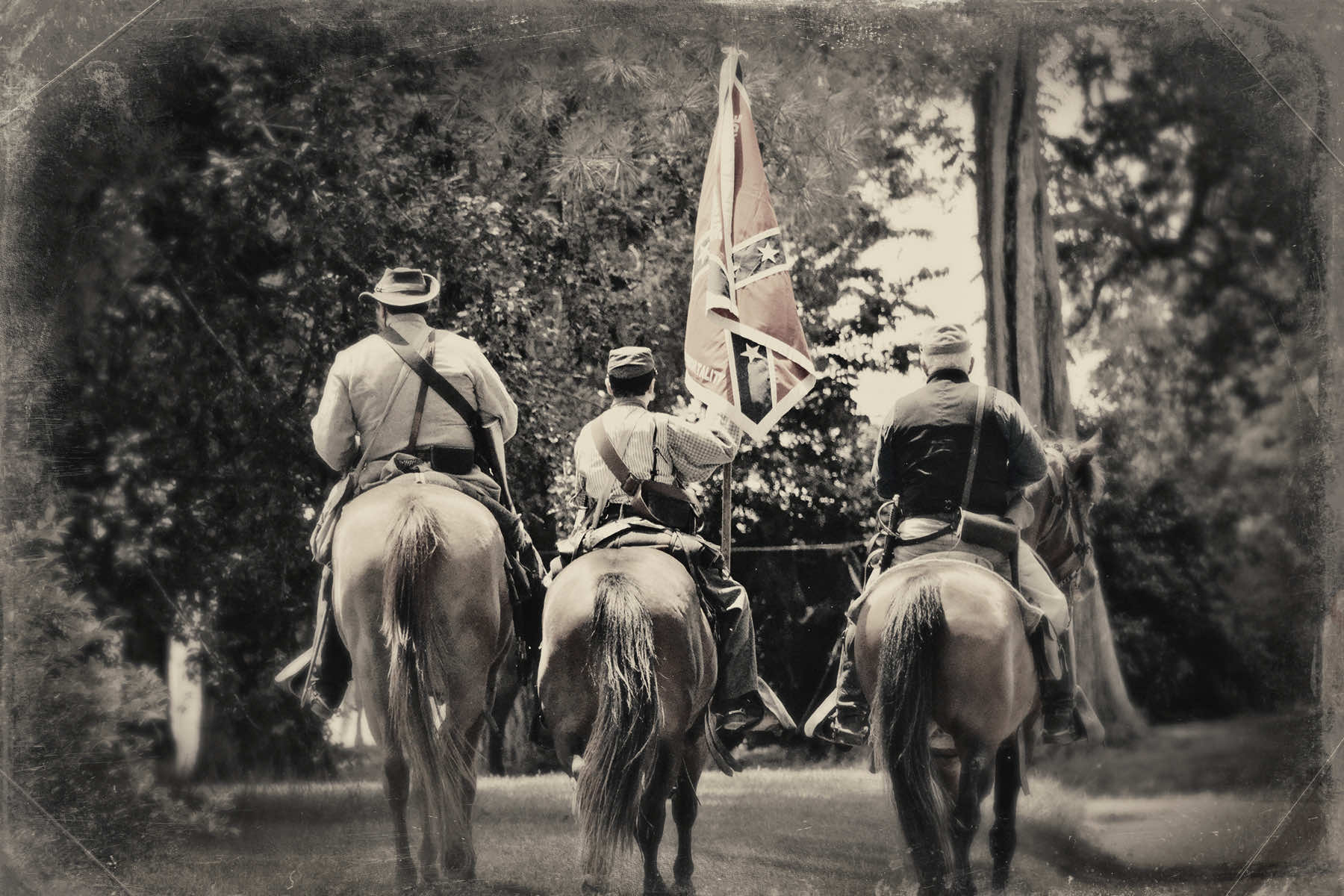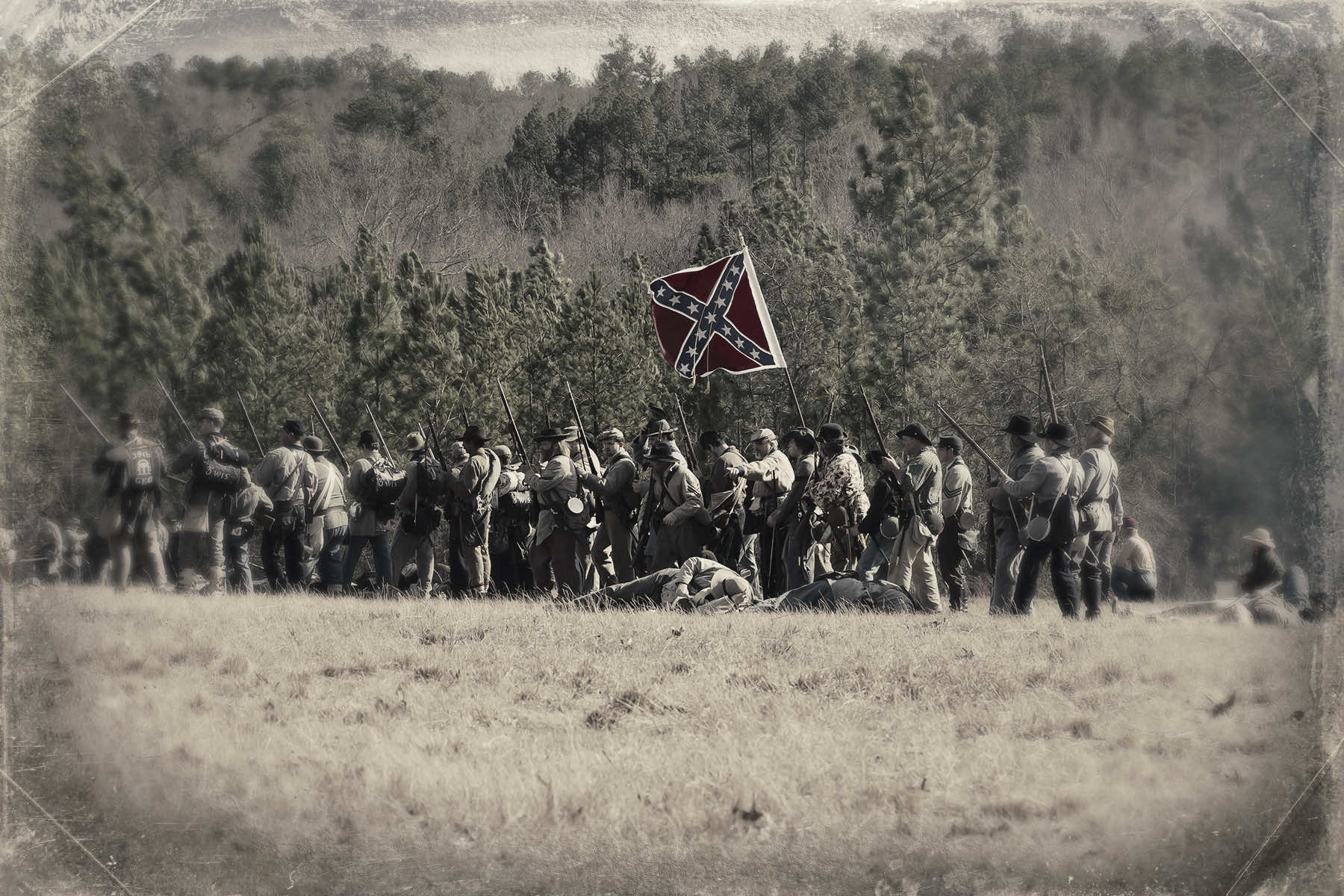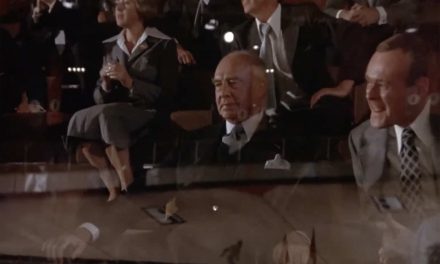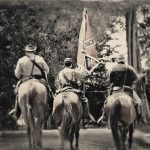
Across the American South, statues of Confederate generals loomed in public squares, along courthouse lawns, and at the entrances to museums for decades. Those monuments, erected during periods of racial backlash in the early 20th century, once stood unchallenged.
In the last few years, however, a widespread movement has drawn attention to the cruelty, oppression, and racism symbolized by the figures. In an era more open to conversations about sexuality and identity, some historical experts have contemplated if certain Confederate leaders might have been gay, or what we would now understand as part of the LGBTQ community.
Speculation ranges from the flamboyant attire and theatricality of General J.E.B. Stuart to the effusive letters common between close male friends in the 19th century. Yet any hint of romantic affection is quickly overshadowed by a grim truth. These men fought to preserve a system of chattel slavery that brutalized millions.
Researchers have begun to examine the hidden or repressed queer identities within a movement that was overtly hostile to the ideals of equality and human dignity. If any Confederate leaders were gay, their involvement in the Confederacy’s violent defense of slavery remains unconscionable.
Even so, it is important to acknowledge the possibility of gay or queer individuals in the ranks of the Confederacy as a reminder that LGBTQ people have existed in every era, even among those who fought against the fundamental rights of others.
MYTH OF THE “LOST CAUSE”
After the Civil War ended in 1865, former Confederate states began crafting a comforting fiction that minimized the role of slavery and recast the conflict as an honorable stand for “states’ rights.” That “Lost Cause” myth lionized Confederate officers such as Robert E. Lee, Stonewall Jackson, P.G.T. Beauregard, and painted them as examples of bravery and virtue.
What often goes unmentioned are the Confederacy’s explicit declarations about why they seceded. Southern leaders made clear in their ordinances of secession and public rhetoric that preserving slavery stood at the heart of their cause. To gloss over that fact is to propagate a lie.
During the early 20th century, as Jim Crow laws tightened White Supremacy across the South, statues commemorating those generals proliferated. Unveiled during parades and ceremonies steeped in nostalgia, such memorials further ingrained the Lost Cause narrative.
Modern defenders of the monuments often claim they merely want to “honor history.” Yet the history they preserve omits the suffering of the enslaved and reduces the horrific reality of forced bondage to a minor footnote.
SPECULATION ABOUT SEXUALITY
The impetus for examining the Confederate leadership’s personal lives arises in part from a modern understanding that LGBTQ people have always existed, whether openly recognized or hidden. Historians note that in the 19th century, intimate friendships between men could sometimes appear to 21st-century eyes as romantic or sexual. Emotional language and affectionate terms were not uncommon.
For J.E.B. Stuart, famous for his plumed hat and grandiloquent style, modern commentators may note the flair and wonder about deeper inclinations. Similarly, some scholars have pointed to the close bonds shared by officers under his command. Others mention the bachelorhood of leaders like Richard S. Ewell prior to a late-life marriage, or the lofty, flowery letters exchanged by Confederate officers.
But there is no concrete documentation to prove that any Confederate general engaged in same-sex relationships. Discretion ruled a society that deemed homosexuality an unmentionable offense, to be hidden at all costs. Letters were sometimes burned, diaries often sanitized, and the historical record rarely preserved evidence of such relationships.
Those who search for a hidden gay Confederate risk overshadowing the broader historical trauma of the era. The generals, whether straight, gay, or somewhere in between, fought to protect an institution that dehumanized people based on skin color.
If any were queer, they nevertheless aligned themselves with a cause that was violently oppressive on multiple fronts – not just racial but also implicitly sexual and gender-based.
TENSIONS OF INTERSECTIONALITY
Acknowledging the possibility of gay identities among Confederate leaders poses an uncomfortable paradox. Intersectionality teaches that systems of oppression can overlap. A person might face persecution for one aspect of their identity, while simultaneously perpetrating oppression against others. In this case, being gay yet defending slavery.
For some LGBTQ advocates, there is temptation to claim “famous historical figures” in order to highlight that queer people have always been integral to human history. But Confederate generals, if any were proven to have been gay, underscore a darker reality.
Merely belonging to an oppressed group does not guarantee empathy for other marginalized communities. People can be complicit in violence and bigotry while harboring private identities that might face discrimination themselves if revealed.
That duality underscores the complexity of human identity. Modern thinkers must avoid applying a simplistic lens that reads close male friendships or emotional letters as conclusive proof of homosexuality. At the same time, it must be recognized that the evidence is often incomplete.
Plenty of LGBTQ individuals throughout history were compelled to hide their orientation to survive. That possibility neither excuses the horrors of slavery nor absolves the Confederate cause.
REJECTING ROMANTIC PORTRAYALS
Confederate apologists sometimes argue that exploring those personal dimensions helps humanize historical figures like Stuart or Beauregard, encouraging a more sympathetic view. But a fuller understanding of who they were, and what they fought for, should not lead to whitewashing.
Romanticizing any aspect of the Confederacy, even the personal allure of its generals, distracts from a monstrous fact. The Confederacy was established to protect the ownership of Black people as property. No measure of personal charm, flamboyant attire, or rumored sexuality can mitigate the moral offense of waging war against the United States to uphold human bondage.
That said, neither does an exploration of sexuality serve as an endorsement of the Confederate cause. Rather, if it pushes the public to acknowledge that historical narratives are messy and filled with contradictions, it might serve an instructive purpose. LGBTQ history is broad and complicated, spanning every social class, race, and creed. But so, too, is the capacity for moral failing.
STATUES, SYMBOLS, AND SINS
In a nation still grappling with systemic racism, the display of the Confederate flag continues at rallies that claim to represent “heritage, not hate.” Hate groups and certain right-wing organizations champion Confederate imagery as part of a broader nostalgia for an America in which White dominance was unchallenged. They distort the narrative of the Civil War, ignoring the centrality of slavery and disguising it as an idealized fight for “liberty.”
In such contexts, any discussion of potential same-sex orientation among Confederate leaders may seem tangential. But it matters because it underscores how history can be manipulated. If Confederate apologists can strip away the oppressive nature of the cause, they can also ignore or sensationalize the personal complexities of historical figures to suit their current agendas.
The danger is the perpetuation of a sanitized version of the Confederacy, one where issues of both race and sexuality are twisted to maintain a heroic myth. The fact that some of those generals displayed “romantic friendship” language or flamboyant style does not lessen the severity of their deeds.
TRUTH AND ACCOUNTABILITY
As the debate over Confederate commemorations rages on, the focus should remain on dismantling the legacy of racism those symbols represent. Whether or not any of these generals were gay does not mitigate the cruelty or betrayal of the United States for which they are known.
Yet openly exploring and acknowledging all possibilities, even those that challenge our comfortable narratives, creates a more truthful understanding of the past. Reckoning with the Confederacy is not about erasing history. It is about eradicating myths, including those that would romanticize or excuse a treasonous war aimed at preserving slavery.
Some Confederate leaders may have had complex personal lives. As human beings, they could be both oppressed and oppressors. Life, identity, and history itself are not neat. They are messy, contradictory, and sometimes vile.
A progressive and inclusive nation must acknowledge that complexity, refuse to idolize those who stand for injustice, and champion the rights of all — no matter who they are or whom they love.
© Photo
Denton Rumsey and Kim Kelley-Wagner (via Shutterstock)















